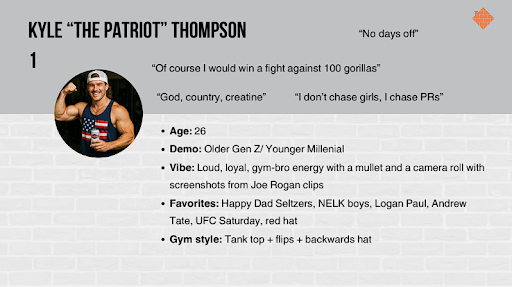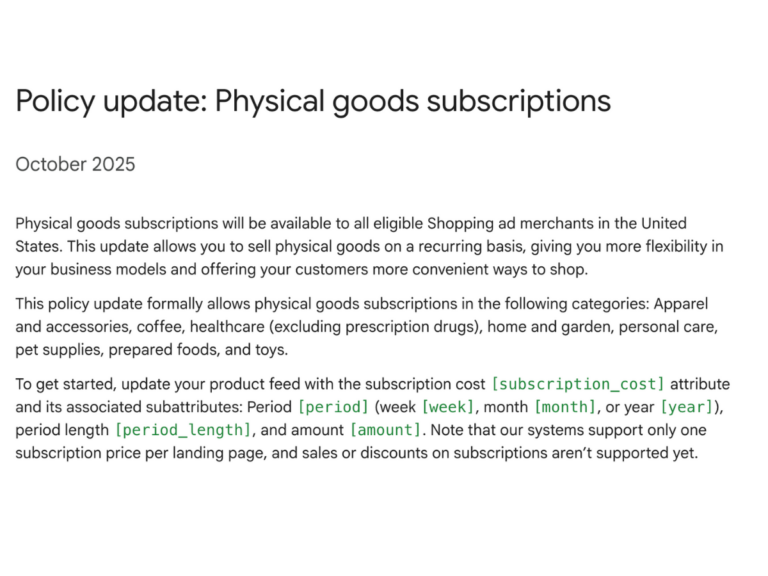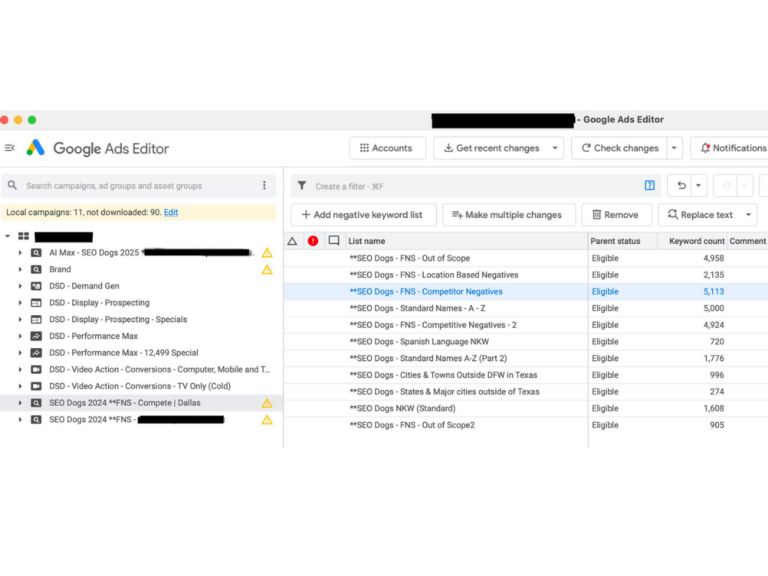When growth is plateauing despite throwing more money at ads – and you’re drowning in marketing decisions – is typically the time when folks start wondering if hiring a fractional CMO is the right move.
Here’s the bottom line:
The Numbers: $5K-$12K monthly for fractional vs. $25K+ for full-time (plus benefits).
Brands that are already generating consistent marketing activity and have the right marketing execution in place typically see 10–30% improvements in leading indicators — like CTR, AOV, or blended CAC — within 60 to 90 days of hiring a strong fractional CMO.
Quick ROI Check: Take your monthly marketing budget, multiply by 0.25. If that number is more than $5K and you’re not seeing consistent growth, a fractional CMO will likely pay for themselves. If it’s less than $5K, it might be too soon for you.
Decision Triggers: Multiple channels with no unified strategy, growth stalled despite increased spend, or you’re prepping for fundraising. You’ve outgrown founder-led marketing but aren’t ready for a $300K executive.
Timeline Reality: 30-90 day trial periods, 6-12 month average engagements, 3-month mark for measurable improvements. Skip this if you need daily execution help (hire a marketing manager) or you’re under $1M revenue (too early).
When to Bail: If you’re not seeing improvements in leading indicators by month 3, something’s wrong.
The good news is that with proper contract structures, you can still exit cleanly and relatively inexpensively.
Use the 5-minute diagnostic below to see if this makes sense for your situation and save yourself months of wasted time.
The 5-Minute Go/No-Go Decision Framework
Answer these honestly. If you lie to yourself here, you’ll waste months and thousands of dollars:
1: Are your marketing results stagnant despite increased spend?
ROAS declining or flat for 3+ months?
Organic traffic hasn’t grown in 6+ months?
Cost per acquisition rising despite “optimization”?
Multiple channels but no one coordinating strategy?
2: Monthly marketing budget >$20K but can’t afford $25K+ for full-time CMO?
Marketing budget: $______
Can afford $5K-$12K monthly for leadership?
Full-time CMO salary would stress cash flow?
3: Need strategic leadership within 30 days vs. 6+ months?
Urgent growth initiatives (fundraising, product launch)?
Can’t wait 6+ months for a full-time hire process?
Need someone who can diagnose problems immediately?
4: Team can execute but lacks senior direction?
Have people who can run great campaigns once given a strategy?
Team gets overwhelmed without clear priorities?
Existing vendors need coordination but work well when directed?
Scoring:
- 8+ checkmarks = Strong candidate for fractional CMO.
- 4-7 = Maybe, depends on specifics.
- Under 4 = Address fundamentals first.
DON’T Hire a Fractional CMO if Any of These Apply…
Execution Bottleneck: Your team is drowning in work and can’t handle more campaigns. A fractional CMO will just add to the pile.
Fix: Hire marketing manager or bring in execution partners first.
Cash Flow Issues: If $5K monthly would stress your finances, you’re not ready.
Fix: That money should go to direct marketing activities. Get profitable first.
Pre-Revenue Stage: If you’re under $1M revenue, or still testing product-market fit.
Fix: At this stage, your resources are better spent on validating the product, building traction, or hiring hands-on executors rather than strategic leaders
Wrong Problem: Your tracking is broken, your website converts poorly, or your product has no market fit.
Fix: Hire specialists for these specific issues.
Full-time vs FCMO vs Agency: Choosing the Right Model
Use this structured decision path to identify whether a fractional CMO, marketing agency, full-time hire, or executional support is the right next move — based on where your brand is right now.
| Your Situation | Best Fit |
| Strong execution team, weak strategy | Fractional CMO |
| Weak execution, clear strategy | Execution Partner / Agency |
| Weak strategy and weak execution | Fractional CMO + Agency |
| Need daily senior leadership | Full-Time CMO |
| Limited budget, sub-$5K for leadership | Execution resources first; revisit strategy later |
Let’s break that down a bit for greater clarity on what to choose and why.
Q1: What’s Your Core Bottleneck?
Are you seeing underperformance because your strategy is unclear or outdated?
- Yes → Go to Q2
- No, we have a solid strategy, just lacking bandwidth → Go to Q4
- Not sure → Ask: “Are we reactive week-to-week?” If yes, go to Q2
Q2: Do You Have at Least One Person or Partner Who Can Execute If Given Clear Direction?
- Yes → Strong candidate for Fractional CMO
- Partially — we can handle some channels but not all → Consider Fractional CMO + Specialized Execution Partner
- No → Go to Q3
Q3: Are You Trying to Build Marketing Leadership While Still Lacking Execution Resources?
If you need both strategy and day-to-day execution — but can’t afford a full-time team — a hybrid approach may be best:
- Budget $8K–$15K/mo? → Start with Fractional CMO + Agency (or consider Digital Position)
- Budget <$8K/mo? → Start with Execution Partner or Marketing Manager, revisit strategic hire in 3–6 months
Q4: Are You Mostly Lacking Bandwidth and Tactical Output, Not Strategic Direction?
- Yes → You need Execution Support, not a CMO. Options: Specialist agency, contractors, or in-house hires
- No, execution is happening but results are flat → Go back to Q1
Q5: Could You Justify a Full-Time Marketing Executive Today?
- Do you have >5 team members to manage?
- Is your marketing budget >$100K/month?
- Do you need daily strategic input?
If you answered yes to most, consider a Full-Time CMO. If no, Fractional CMO is likely more appropriate and scalable
Founder’s Reality Check: Are Any of These True?
If two or more of the following apply, you’re likely overdue for strategic leadership:
- You (the founder) are still setting budgets and approving creative
- You rely on vendors to “bring you ideas” but don’t know which are good
- Your ROAS or CAC has stagnated and no one on your team owns the turnaround
- You’re prepping for a raise and need to build a clean marketing story
- You have no clear 6-month growth plan, only tactics and campaigns
- Your agency asks for direction — and you’re not sure what to say
If these sound familiar, a Fractional CMO can give you clarity, leadership, and accountability without the $300K commitment.
There isn’t a one-size-fits-all winner, but there are clear pros based on your situation. If you need embedded executive thinking and decision-making, fractional wins.
If you need comprehensive execution teams, agencies excel. (Psst: If you need both, we hope you consider Digital Position 😉 )
Revenue-Stage Reality Check
Assuming none of the constraints we’ve discussed so far apply to you, here’s what hiring a fractional CMO might actually look like.
At $5M Revenue:
- Hours needed: 5-10 hours/week
- Monthly cost: $5K-$8K
- Focus: Brand positioning, growth system fundamentals, moving from reactive to proactive
- Marketing budget: ~$25K-$50K monthly
At $10M Revenue:
- Hours needed: 15-20 hours/week
- Monthly cost: $8K-$12K
- Focus: Scaling challenges, multiple segments, complex multi-channel orchestration
- Marketing budget: ~$75K-$100K monthly
Most companies in this range need 10-15 hours weekly – enough for strategic leadership without paying for unused time.
But before you dial your HR team, keep in mind…
Your FCMO Better Have These Skills (Or They’re Already Behind)
AI Integration
Not just “I use ChatGPT” – actual AI workflows for content, segmentation, and optimization.
If they can’t explain how AI enhances their strategic thinking, pass.
Privacy-First Marketing
Third-party cookies are dead. iOS changes killed simple attribution.
Your CMO needs first-party data strategies and privacy-compliant tactics.
Advanced Attribution
If they’re making decisions based on last-click attribution, maybe, think again.
They need to understand marketing mix modeling and incrementality testing.
Multi-Platform Orchestration
The “just run Facebook ads” era is over.
Your FCMO needs experience coordinating multiple channels as an integrated system.
Industry-Specific Nuances
Here’s where generic advice fails – what works for SaaS bombs for fashion. Here’s what to look for when you’re hiring:
D2C Fashion/Beauty
Non-Negotiable Experience:
- Influencer relationship management and activation strategies
- Seasonal campaign planning and inventory coordination
- Social commerce and visual content marketing
- Understanding of trend cycles and social proof dynamics
Vetting Questions:
- “Walk me through coordinating a product launch across paid social, influencer partnerships, and email”
- “How do you balance seasonal inventory planning with marketing spend?”
Success Metrics: Brand awareness, share of voice, influencer engagement rates, seasonal revenue performance
Red Flags: Only focuses on performance marketing, ignores brand building, doesn’t understand social media’s role in fashion
Supplements/Health Products
Non-Negotiable Experience:
- FDA compliance and regulatory constraint navigation
- Subscription model optimization and retention strategies
- Customer lifetime value focus vs. one-time purchase thinking
- Health claims and positioning within legal boundaries
Vetting Questions:
- “How do you balance performance claims with regulatory requirements?”
- “What’s your approach to subscription retention vs. new customer acquisition?”
Success Metrics: LTV:CAC ratios, subscription retention rates, compliance track record, repeat purchase rates
Red Flags: Suggests aggressive health claims, doesn’t understand supplement regulations, focuses only on acquisition
Electronics/Tech Products
Non-Negotiable Experience:
- Technical product communication to multiple buyer personas
- B2B channel marketing and partner coordination
- Longer sales cycle management and nurture strategies
- Product launch sequencing and technical content marketing
Vetting Questions:
- “How do you communicate complex features to different audiences?”
- “What’s your B2B channel strategy versus direct-to-consumer approach?”
Success Metrics: Product adoption rates, technical content engagement, channel partner activation, sales cycle length
Red Flags: Oversimplifies technical products, doesn’t understand B2B processes, weak product marketing experience
Amazon-Heavy/Marketplace Brands
Non-Negotiable Experience:
- Amazon advertising platform mastery (not just “we’ll figure it out”)
- Listing optimization and ranking improvement strategies
- Multi-marketplace expansion and channel balance
- Amazon-specific attribution and analytics
Vetting Questions:
- “How do you balance Amazon growth with building our D2C channel?”
- “What’s your Amazon advertising strategy versus traditional paid search?”
Success Metrics: Amazon ranking improvements, ACoS optimization, multi-channel revenue distribution, marketplace expansion success
Red Flags: Treats Amazon like just another ad platform, generic marketplace responses, no specific Amazon experience
Minimizing Risk When Evaluating Fractional CMOs
The Weighted Candidate Scorecard
Rate each candidate 1-5 on these criteria, multiply by weight, sum for total score:
| Criteria | Weight | Your Score | Weighted Score |
| Industry Experience | 20% | ___/5 | ___/100 |
| Strategic Track Record | 20% | ___/5 | ___/100 |
| Channel Expertise | 15% | ___/5 | ___/75 |
| Leadership/Culture Fit | 15% | ___/5 | ___/75 |
| AI/Martech Fluency | 10% | ___/5 | ___/50 |
| Availability/Flexibility | 10% | ___/5 | ___/50 |
| References/Testimonials | 10% | ___/5 | ___/50 |
| TOTAL | 100% | ___/500 |
Scoring Guide:
- Industry Experience: 5 = Perfect vertical match, 3 = Related experience, 1 = No relevant experience
- Strategic Track Record: 5 = Specific, verifiable results in similar companies, 1 = Vague or unverifiable claims
- Channel Expertise: 5 = Expert in your key channels, 3 = General knowledge, 1 = Weak in your channels
The 30-90 Day Trial Structure
Never commit long-term without testing. Here’s one potential way to structure it:
Payment Structure:
- 50% upfront (covers commitment and initial work)
- 30% at 60 days (strategy completion)
- 20% at 90 days (tied to performance milestones)
Milestone Gates:
- Day 30: Audit complete, quick wins identified and implemented
- Day 60: Strategy document finalized, initial campaigns launched
- Day 90: Measurable improvements in agreed KPIs
Exit Protection:
- Either party can terminate with 30 days notice
- All IP and work product transfers to you
- Knowledge transfer session required if terminated
Scope Boundaries:
- Included: Strategy development, team leadership, campaign oversight, vendor coordination
- Excluded: Daily campaign execution, social media management, content creation
- Gray Areas: Define upfront – vendor management, hiring assistance, board presentations
What Success Looks Like
Here’s how you know if you’re actually winning.
Leading Indicators (Should improve by Day 60)
- Click-through rates on key campaigns
- Email open and engagement rates
- Website traffic quality and sources
- Lead generation volume and quality
Lagging Indicators (Should improve by Day 90)
- Customer acquisition costs
- Return on ad spend
- Conversion rates
- Revenue attribution to marketing
Systems Indicators (Should be in place by Day 90)
- Clear reporting and dashboard visibility
- Documented processes and playbooks
- Trained team with defined responsibilities
- Vendor relationships and coordination systems
Success Monitoring: Early Warning System
Most relationships fail because problems aren’t caught early. Here’s what to monitor:
Weeks 2-4: Foundation Issues
- Red Alert: No clear 30-day plan presented by week 2
- Red Alert: Can’t explain their analytical approach or data sources
- Yellow Flag: Meetings are rushed or poorly prepared
- Green Light: Asking probing questions about your business and customers
Interventions
- Action: Direct conversation about expectations and deliverables
- Timeline: 1 week to see improvement
- Escalation: Consider early termination if no improvement
Weeks 5-8: Strategy Development
- Red Alert: Still “gathering information” with no actionable insights by week 6
- Red Alert: Strategy document is generic template, not customized to your business
- Yellow Flag: Scope creep without discussion of capacity or compensation
- Green Light: Specific, actionable recommendations with clear rationale
Interventions
- Action: Formal review meeting with specific concerns addressed
- Timeline: 2 weeks to course-correct
- Escalation: Modify scope or extend timeline if needed
Weeks 9-12: Execution Phase
- Red Alert: Campaigns not launched or performing poorly with no explanation
- Red Alert: Poor communication or becoming unresponsive
- Yellow Flag: Team confusion about priorities or resistance to new processes
- Green Light: Clear progress on metrics with regular optimization
Interventions
- Action: Performance review against established milestones
- Timeline: Immediate improvement expected
- Escalation: Terminate if performance doesn’t improve within 1 week
Long-Term Success Planning
There’s a lot you should be planning to accomplish with your fractional CMO, beyond just marketing campaigns and execution.
| Systems | Knowledge Transfer |
| Strategy documents, playbooks, and process documentation | Weekly team training sessions, not just doing the work themselves |
| Campaign templates and creative briefs | Clear documentation of all decisions and rationale |
| Vendor relationship documentation and contact information | Cross-training of internal team members on key processes |
| Team training materials and standard operating procedures (SOPs) | Regular strategy review sessions with internal stakeholders |
Transition Planning
- Month 3: Assess whether to extend, modify, or transition
- Month 6: Evaluate readiness for full-time hire or internal promotion
- Month 9: Plan succession if moving to full-time leadership
Signs You’re Ready for a Full-Time CMO
- Consistent month-over-month growth requiring daily strategic decisions
- Team size >5 people needing daily leadership and development
- Complex multi-channel operations requiring 40+ hours weekly of strategic attention
- Budget >$100K monthly requiring constant optimization and coordination
And here’s how you make these transitions:
- Use fractional CMO to help recruit and vet full-time candidates
- Overlap periods for knowledge transfer and smooth transition
- Retain fractional CMO as advisor during full-time onboarding if needed
The goal isn’t to keep your fractional CMO forever – it’s to build a marketing engine that can scale beyond their involvement, whether through internal development or full-time leadership hire.
The Real ROI Calculator: What Inaction Costs You
Here’s what nobody talks about when discussing fractional CMO costs: the real expense isn’t what you pay them – it’s what you lose while you’re deciding.
Before you dismiss this as “another expense,” run this math:
Monthly Marketing Waste
Without clear strategic oversight, ecommerce brands often misallocate 10–20% of their marketing budget — through misaligned channel spend, poor creative testing discipline, or vendor inefficiency.
If you’re spending $50K monthly on marketing… do the math!
A strong fractional CMO can often recapture this value by aligning spend with actual customer behavior.
Opportunity Cost
Your competitors with strategic leadership are optimizing while you’re treading water.
In fast-moving ecommerce environments, delaying strategic alignment by even one quarter can lead to missed seasonal opportunities, inefficient spend, or stalled testing cycles.
For a $5M brand, this could mean delaying $50K–$100K in potential upside — depending on your media mix and lifecycle stage.
Founder Distraction
Unless your core business activity is purely marketing, you have to ask yourself: how many hours monthly do you spend on marketing decisions that a CMO (fractional or otherwise) should handle?
If you value your time at $200/hour (conservative for a CEO)…
Twenty hours monthly = $4,000 of misallocated leadership time.
Decision Paralysis Tax
Every month you delay hiring strategic leadership, these costs compound.
Six months of “should we or shouldn’t we?” often costs more than a full year of fractional CMO fees.
Many six-figure ecommerce brands report that bringing in a fractional CMO helps them course-correct underperforming ad spend, improve media planning, and reprioritize internal workflows.
This can unlock 10–15% monthly efficiency gains on marketing budgets that exceed $50K.
That can translate into thousands in recovered value, even before accounting for long-term growth benefits.
Here’s the mental model that’s helped dozens of ecommerce founders make this decision confidently:
If monthly marketing waste + opportunity cost > fractional CMO investment, hire immediately.
The question is, can you afford NOT to have strategic marketing leadership.
Most $5M-$10M ecommerce businesses discover that the cost of muddling through without strategic leadership far exceeds the investment in getting it right. The companies that figure this out first are the ones that scale past their competitors.
Next Steps
If you’re still uncertain whether you need a fractional CMO, a traditional agency, or something in between, we offer a free strategy call where we’ll help you identify your biggest growth opportunities and determine the right leadership model for your business.
As an agency that embeds like a fractional CMO but brings execution capability, we can show you what a hybrid approach might look like for your specific situation.
Even if you decide we’re not the right fit, you’ll walk away with a clear action plan and honest assessment of your options, so why not book your no-obligation strategy call today?






no replies